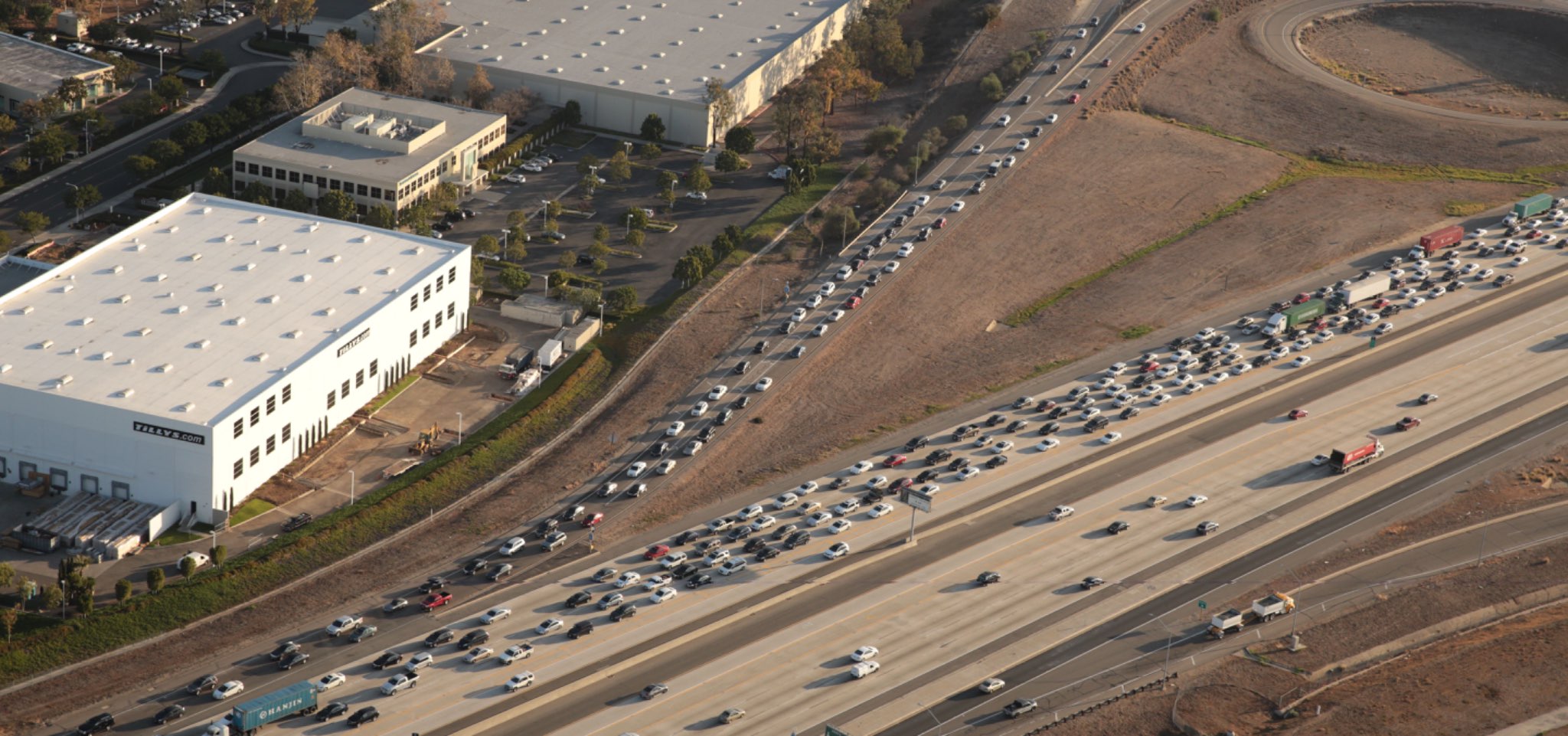Andrew Oftelie, Chief Financial Officer
Orange County Transportation Authority
Orange County Transportation Authority
Learn about our Bond Programs, including information about bond offerings, ratings, CUSIPs, and more.
Add this issuer to your watchlist to get alerts about important updates.
Learn about our Bond Programs, including information about bond offerings, ratings, CUSIPs, and more.
On November 7, 2006, Orange County voters gave Orange County Transportation Authority (OCTA) a vote of confidence and approved a 30-year extension of an existing one half-cent sales tax (Measure M1) that was set to expire in 2011. The renewed measure, Measure M2 (M2), allows OCTA to continue making transportation improvement that benefit the public and the local economy in Orange County. In 2017, OCTA externally rebranded Measure M as OC Go to raise awareness about Orange County’s vital local sales tax for transportation improvements. OC Go is designed to reduce traffic congestion and enhance overall mobility. Improvements in the plan include improving key freeways, upgrading major interchanges, and adding capacity and maintaining streets and roads. OC Go allocates 43 percent of funds to freeway projects, 32 percent to streets and roads, and 25 percent to transit projects.
On October 14, 2024, the OCTA Board received the 2024 OC Go sales tax forecast of $14 billion through 2041, which reflects a 5.4 percent decrease (or $800 million) compared to the prior year’s forecast. FY 2023-24 sales tax collections declined by 1.8 percent to $431 million, compared to the prior FY. While the Next 10 Plan sets a course for accelerated project delivery through FY 2033-34, it also ensures that the entire OC Go program and project commitments will be delivered through 2041.
On November 12, 2024, the 2024 Next 10 Plan was approved by the Board, incorporating updates to the OC Go sales tax revenue forecast, external funding assumptions, and project cost estimates. This comprehensive plan establishes priorities and funding commitments over a 10-year period (2025-2034) to maintain fiscal sustainability and advance the delivery of transportation improvements.
The Freeway Program is the largest component of the overall OC Go Program, receiving 43 percent of the net sales tax revenue. Under the 2024 Next 10 Plan, $3.3 billion in freeway projects are scheduled for delivery. As of FY 2024-25, 14 out of the 30 promised freeway projects have been completed, representing a total investment of $2.4 billion. Among these, the I-405 Improvement Project, valued at $2.1 billion, stands as the largest capital project in OCTA’s history and was successfully completed in 2023.
To support transportation investments, OCTA issues Sales Tax Revenue Bonds. For example, the Series 2019 Bonds, issued in February 2019, provided funding for the general-purpose lanes of the I-405 Improvement Project. The current outstanding bonds include the Series 2010A Bonds and Series 2019 Bonds. Under the 2024 Next 10 Plan, no additional bond issuances are planned through 2041.
On November 7, 2006, Orange County voters gave Orange County Transportation Authority (OCTA) a vote of confidence and approved a 30-year extension of an existing one half-cent sales tax (Measure M1) that was set to expire in 2011. The renewed measure, Measure M2 (M2), allows OCTA to continue making transportation improvement that benefit the public and the local economy in Orange County. In 2017, OCTA externally rebranded Measure M as OC Go to raise awareness about Orange County’s vital local sales tax for transportation improvements. OC Go is designed to reduce traffic congestion and enhance overall mobility. Improvements in the plan include improving key freeways, upgrading major interchanges, and adding capacity and maintaining streets and roads. OC Go allocates 43 percent of funds to freeway projects, 32 percent to streets and roads, and 25 percent to transit projects.
On October 14, 2024, the OCTA Board received the 2024 OC Go sales tax forecast of $14 billion through 2041, which reflects a 5.4 percent decrease (or $800 million) compared to the prior year’s forecast. FY 2023-24 sales tax collections declined by 1.8 percent to $431 million, compared to the prior FY. While the Next 10 Plan sets a course for accelerated project delivery through FY 2033-34, it also ensures that the entire OC Go program and project commitments will be delivered through 2041.
On November 12, 2024, the 2024 Next 10 Plan was approved by the Board, incorporating updates to the OC Go sales tax revenue forecast, external funding assumptions, and project cost estimates. This comprehensive plan establishes priorities and funding commitments over a 10-year period (2025-2034) to maintain fiscal sustainability and advance the delivery of transportation improvements.
The Freeway Program is the largest component of the overall OC Go Program, receiving 43 percent of the net sales tax revenue. Under the 2024 Next 10 Plan, $3.3 billion in freeway projects are scheduled for delivery. As of FY 2024-25, 14 out of the 30 promised freeway projects have been completed, representing a total investment of $2.4 billion. Among these, the I-405 Improvement Project, valued at $2.1 billion, stands as the largest capital project in OCTA’s history and was successfully completed in 2023.
To support transportation investments, OCTA issues Sales Tax Revenue Bonds. For example, the Series 2019 Bonds, issued in February 2019, provided funding for the general-purpose lanes of the I-405 Improvement Project. The current outstanding bonds include the Series 2010A Bonds and Series 2019 Bonds. Under the 2024 Next 10 Plan, no additional bond issuances are planned through 2041.

The 91 Express Lanes was born from the need for congestion relief on SR-91 when no public funds were available to solve this critical transportation problem. Built by the California Private Transportation Company (CPTC), the 91 Express Lanes embodied a unique concept: The private sector would take the risk and the state would get congestion relief at no cost to taxpayers.
Built at a cost of $135 million, the Orange County section of the project was authorized as a toll road by the State of California in 1989 and opened in 1995. An agreement with the State of California Department of Transportation (Caltrans) included a non-compete provision that created a 1.5-mile protection zone along each side of SR-91. This zone prohibited improvements along the corridor and created mobility problems as the region and corresponding transportation demands grew.
To mitigate growing concerns over congestion, the Orange County Transportation Authority (OCTA) acquired the 91 Express Lanes franchise rights in January 2003. This eliminated the non-compete provision, clearing the way for future enhancements that will increase capacity and improve traffic flow along the SR-91 corridor.
In 2008, the Riverside County Transportation Commission (RCTC) received authority to extend the Express Lanes to I-15. Traffic congestion on eastbound SR-91 between Anaheim and Corona is routinely among the worst five areas in the nation. At a cost of $1.4 billion, the RCTC 91 Corridor Improvement Project added regular lanes, tolled express lanes, auxiliary lanes and direct express lane connectors from the northbound I-15 to the westbound SR-91 and from the eastbound SR-91 to the southbound I-15. Improvements to interchanges, ramps and surface streets were also made along the 91 corridor.
The Riverside section of the 91 Express Lanes opened in 2017, providing customers with 8 additional miles of travel time certainty.
To provide 91 Express Lanes customers with excellent customer service, OCTA and RCTC entered into an agreement with the current 91 Express Lanes operator to service both segments of the Express Lanes.
In July 2013, OCTA issued Senior Lien Toll Road Revenue Refunding Bonds, Series 2013, to refund the outstanding Series 2003 Bonds, which were originally issued to finance the acquisition of the 91 Express Lanes for the design, construction and installation of the toll road. The current bonds outstanding are the Senior Lien Toll Road Revenue Refunding Bonds, Series 2023 Bonds, issued in July of 2023 to refund the Series 2013 Bonds.
The 91 Express Lanes was born from the need for congestion relief on SR-91 when no public funds were available to solve this critical transportation problem. Built by the California Private Transportation Company (CPTC), the 91 Express Lanes embodied a unique concept: The private sector would take the risk and the state would get congestion relief at no cost to taxpayers.
Built at a cost of $135 million, the Orange County section of the project was authorized as a toll road by the State of California in 1989 and opened in 1995. An agreement with the State of California Department of Transportation (Caltrans) included a non-compete provision that created a 1.5-mile protection zone along each side of SR-91. This zone prohibited improvements along the corridor and created mobility problems as the region and corresponding transportation demands grew.
To mitigate growing concerns over congestion, the Orange County Transportation Authority (OCTA) acquired the 91 Express Lanes franchise rights in January 2003. This eliminated the non-compete provision, clearing the way for future enhancements that will increase capacity and improve traffic flow along the SR-91 corridor.
In 2008, the Riverside County Transportation Commission (RCTC) received authority to extend the Express Lanes to I-15. Traffic congestion on eastbound SR-91 between Anaheim and Corona is routinely among the worst five areas in the nation. At a cost of $1.4 billion, the RCTC 91 Corridor Improvement Project added regular lanes, tolled express lanes, auxiliary lanes and direct express lane connectors from the northbound I-15 to the westbound SR-91 and from the eastbound SR-91 to the southbound I-15. Improvements to interchanges, ramps and surface streets were also made along the 91 corridor.
The Riverside section of the 91 Express Lanes opened in 2017, providing customers with 8 additional miles of travel time certainty.
To provide 91 Express Lanes customers with excellent customer service, OCTA and RCTC entered into an agreement with the current 91 Express Lanes operator to service both segments of the Express Lanes.
In July 2013, OCTA issued Senior Lien Toll Road Revenue Refunding Bonds, Series 2013, to refund the outstanding Series 2003 Bonds, which were originally issued to finance the acquisition of the 91 Express Lanes for the design, construction and installation of the toll road. The current bonds outstanding are the Senior Lien Toll Road Revenue Refunding Bonds, Series 2023 Bonds, issued in July of 2023 to refund the Series 2013 Bonds.
